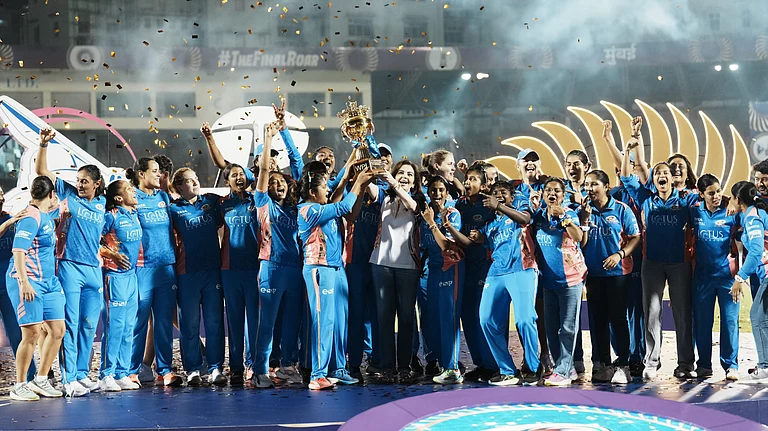Next week, Keerti Tewari will be going to the opening of a new branch of a breast cancer support group, of which she was a founding member nearly seven years ago, in Delhi. The breast cancer sisterhood, she says, is very strong. “You know, when you meet somebody who’s gone through the same problem, there’s an instant bonding.”
Back in 2007, when she was diagnosed with breast cancer, Tewari, a civil servant then posted in Bangalore, recalls that what she wanted most was to meet someone like her. “I used to think ‘I’m less than 40, I have a little child, show me somebody who’s like me,’” she says. Two years later, after she had recovered, she and four other cancer survivors got together to start Pink Hope, a support group, in Bangalore at the HCG hospital, which met every month to share experiences, organise talks by experts, quizzes, ‘antakshari’ and, yes, they even penned a play on cancer.
“The initial reaction of 99 per cent of people who are diagnosed with cancer is that it’s a death sentence, no matter how smart or educated they are. It is a difficult disease and one in which the treatment is sometimes worse than the disease itself,” says Tewari who went through cycles of chemotherapy, surgery, seven weeks of radio therapy and then further cycles of a breast cancer drug. For the past three years, since she got transferred to a new city, she has been in touch with cancer patients mostly on the phone. She feels that women are generally more aware about breast cancer these days. “And you see a lot of women who have survived. I think those numbers are increasing and definitely, the feeling that ‘I’m going to die’, is decreasing. People know that cancer is tough and a lot of the fear is about chemotherapy and side effects. But the fear of dying has definitely gone,” she says.
Today, doctors say they are able to save the breast in a large number of patients through breast conservative treatment. There’s been a dramatic change, experts agree, in the treatment of other cancers where the biology of the disease condition is well understood.
Oncologist Dr S.H. Advani cites at least half a dozen diseases which have changed in terms of the disease life history, for instance, chronic myeloid leukemia, where 100 per cent of the patients used to die within about three years or so. “That was the story 30 years ago. Today, 95 per cent of patients are living a normal life after 10, 15 or 20 years of having been diagnosed,” says Advani. As one of India’s pioneering cancer specialists, he can recall a time when it was ingrained in people’s minds that there was no treatment for most cancers. That has changed. “Patients come and they want to just hear that there is a treatment. The only line they want is: ‘We have a treatment for you, don’t worry,’” he says. Of course, Advani also points out that inequalities still persist in the availability of treatment in India. “You go out of the big cities and you find there is nothing. In the US, wherever you go, you will at least get a very good standard treatment. Not in India,” he says.

The incidence of cancer in the country is gradually increasing—it’s around 100-120 per one lakh population—and given the large percentage of young people, it’s likely we will see more cancer as the population ages. Trends, meanwhile, have been changing significantly as lifestyles are changing. Cervical cancer is still predominant in rural India but breast cancer has surpassed it in overall numbers. Among males, penile cancers used to be reported a few decades ago. “Now, we hardly see penile cancers, again because of lifestyles. But we are seeing more of other cancers. Cancers of the lungs, the pancreas and gastro-intestinal cancer, which is all lifestyle related,” says Dr Anil K. D’Cruz, director of Mumbai’s Tata Memorial Hospital. The commonest cancer in India is head and neck cancer—accounting for about one third of all cancers—predominantly because of tobacco use. “The moment you add lung, oesophagus and other tobacco-related cancers, about one third to one half, depending on the registry that you see, are tobacco-related cancers. The first message is ‘prevention is better than cure’. If our lifestyle is good, we won’t have one third to a half of our cancers,” he says. “We need to prevent, we need to diagnose early and finally, yes, we have modern medicine that will decrease your functional problems, cosmetic problems, make surgery more safe, treatment more safe, decrease side-effects and some of them do cause benefit.”
More significantly, as experts point out, there’s been an improvement in early diagnosis compared to just 15 years ago. And, quality of life, as another expert put it, has taken centre stage when it comes to treatment options. By one estimate, about 3.5 lakh people get treated for cancer each year, which means around two-thirds don’t get actively treated because of an advanced stage of diagnosis or poor access to healthcare among other reasons. The number of those seeking treatment is set to increase and doctors say there is a critical need for higher investment in healthcare facilities. “People have realised that cancer is going to increase. We need good treatment facilities as people’s lifestyle improves and they want better treatment. So, both the government and the private sector are rising to the occasion, a bit slower though, but it needs to be done,” says D’Cruz. He also points out to ongoing research into cost-effective treatment globally, including at Tata Memorial, for instance, into metronomic scheduling of chemotherapy—low doses of chemo at intermittent intervals. “This costs less and you don’t need a high tech centre to give it in. We have seen initial promising results, but it needs to be ratified in large, randomised evidence before the world can adopt it,” he says.
Earlier this year, came the announcement of ‘Cancer Moonshot 2020’ in the US, a global coalition working towards a new approach to cancer, the ultimate goal being a vaccine-based immunotherapy tailored to the unique tumour signature of individual patients. “They are looking at gene profiling of every tumour and with this they will be able to identify what is called personalised treatment. That means, for a gene profile, we will know which drug will work and which will not work. So we can save the patient from unnecessary drugs,” says Dr Advani. In the Indian context, he feels the key focus of healthcare authorities should be on producing dramatic impact. “Which means people should be able to understand the disease. They should have some exposure towards cancer right from school onwards. People should start talking about people who are cured. I think it will be a push for everybody. It will push research and the clinical therapeutic aspect,” he says.


























